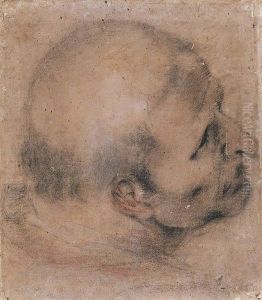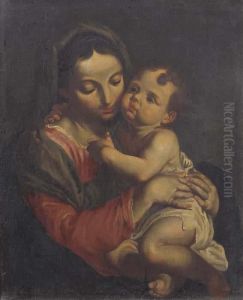Martino Cignaroli Paintings
Martino Cignaroli was an Italian painter born in 1720 in Verona, a city renowned for its rich artistic heritage during the Italian Baroque and Rococo periods. He was part of the Cignaroli family, a lineage that included several notable artists, which undoubtedly influenced his decision to pursue a career in art. His uncle, Giambettino Cignaroli, was particularly famous and served as an early mentor to Martino, guiding him through the fundamentals of painting and exposing him to the vibrant art scene of the time.
Martino Cignaroli's work is characterized by its adherence to the Baroque and Rococo styles, with a particular emphasis on religious and mythological subjects. He was adept at employing dramatic lighting and rich, vivid colors to imbue his paintings with emotion and vitality, traits that were highly prized in the art of his era. Cignaroli's talent and dedication to his craft earned him commissions from many prestigious clients, including churches, nobility, and wealthy patrons, which allowed him to enjoy a successful career.
Despite his success, Martino Cignaroli's life and work have been somewhat overshadowed by the fame of his uncle and other contemporaries. However, art historians recognize him as a significant figure in the Italian art scene of the 18th century. His paintings can be found in various museums and collections, where they continue to be studied and admired for their beauty and technical skill. Martino Cignaroli's contribution to the Italian Baroque and Rococo movements remains an important part of his legacy, highlighting the depth and diversity of talent present in Italy during this period.
Martino Cignaroli passed away in 1790, leaving behind a body of work that, while not as extensively celebrated as some of his peers, continues to be appreciated for its artistic merit and historical value. His paintings offer insight into the religious and cultural themes of his time, serving as a window into the past for modern-day art lovers and historians alike.

